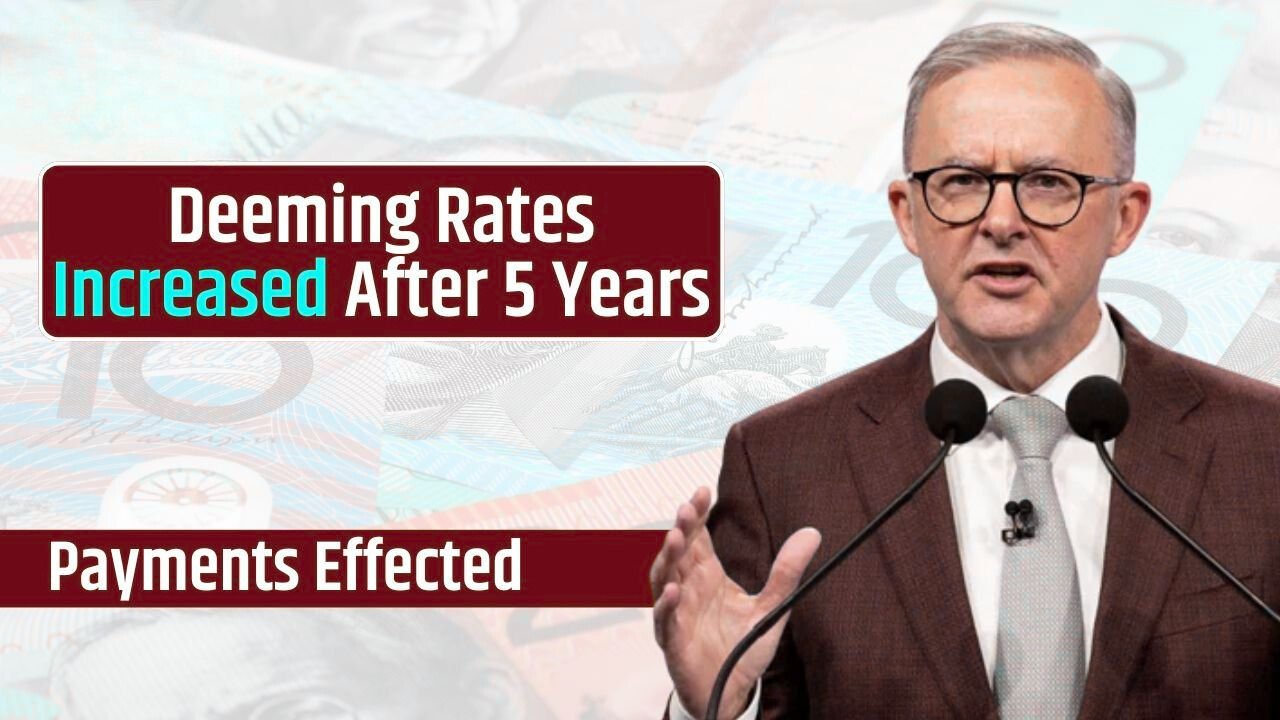After staying frozen at record lows for five years, Australia’s deeming rates have finally increased. These rates are central to how Centrelink calculates your income from financial assets, which then affects your pension payments. While the rise is small, it could mean a slight drop in fortnightly income for many retirees.
Let’s break it down in simple terms so you can see how this change may affect you.
When Did the Change Take Effect?
The new deeming rates came into effect last Saturday, alongside regular pension indexation. This means age pensioners will see the change reflected in their next Centrelink payment.
What Is Deeming?
Deeming is a set of rules Centrelink uses to estimate income from financial assets, such as:
- Bank accounts and term deposits
- Shares and managed funds
- Superannuation (if you’ve reached pension age)
Instead of counting your actual earnings, Centrelink assumes a fixed income rate (the deeming rate).
If you earn more than the deemed rate, the extra isn’t counted in the income test.
If deeming rates rise, your assessed income goes up, which may reduce your pension.
The New Deeming Rates
Here’s a quick comparison:
| Deeming Rate Type | Previous Rate | New Rate |
|---|---|---|
| Lower Rate | 0.25% | 0.75% |
| Upper Rate | 2.25% | 2.75% |
These rates were last cut in 2020 during COVID-19 to support pensioners. Before that, they were higher (1% and 3%).
Who Is Most Affected?
Anyone receiving income support with financial assets will be impacted, but the group feeling it most are age pensioners.
- Around 2.6 million Australians receive the age pension
- About 457,000 already had deeming applied before the change
- Now, an extra 69,500 pensioners will see reduced payments
How Much Will Payments Drop?
On average, pensioners could lose around $6.70 per fortnight.
Breakdown:
- Singles – First $64,200 of assets deemed at 0.75%, anything above at 2.75%
- Couples – First $106,200 combined at 0.75%, anything above at 2.75%
For many, this reduction will be partly offset by the latest pension indexation increase.
Why Age Pensioners Feel It More
Retirees usually have larger savings, investments, or super balances compared to younger support recipients. This means even a small change in deeming rates hits them harder.
Could Rates Go Up Again?
Yes. The Australian Government Actuary reviews rates regularly to match real-world returns. While the government has the final say, rates could rise again in the future, especially if the economy improves.
What Pensioners Should Do Now
- Check your assets: Log in to myGov or speak with Centrelink to see how the new deeming rates affect you.
- Review your budget: Even small changes can matter if you’re on a tight income.
- Seek advice: A financial advisor can help you adjust investments or maximise entitlements.
FAQs
Q1: How much did deeming rates increase?
They rose by 0.5 percentage points – lower rate is now 0.75%, upper rate 2.75%.
Q2: When did the new rates start?
They began last Saturday, in line with pension indexation.
Q3: Who is most affected?
Age pensioners with savings, super, or investments.
Q4: How much could my pension drop?
The average drop is about $6.70 a fortnight, but it depends on your assets.
Q5: Will deeming rates rise again?
Yes, further increases are possible depending on economic conditions.
Final Thoughts
The return of higher deeming rates after five years means some pensioners will see small reductions in their payments. For many, the impact will be softened by the latest pension increase, but it’s still worth checking your situation.
If you’re on the age pension, review your assets and budget now to stay ahead of the change.



